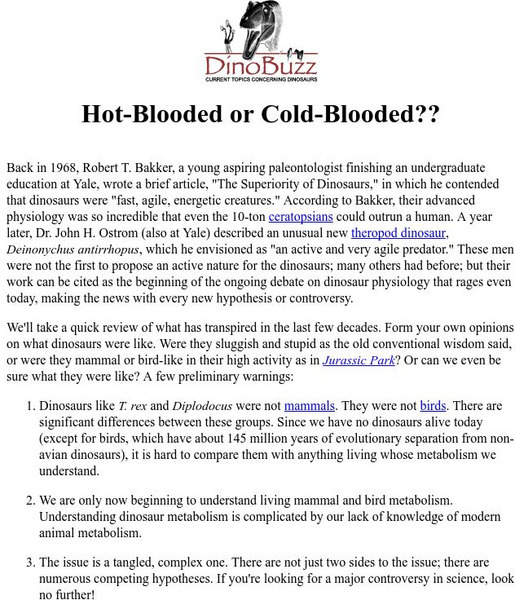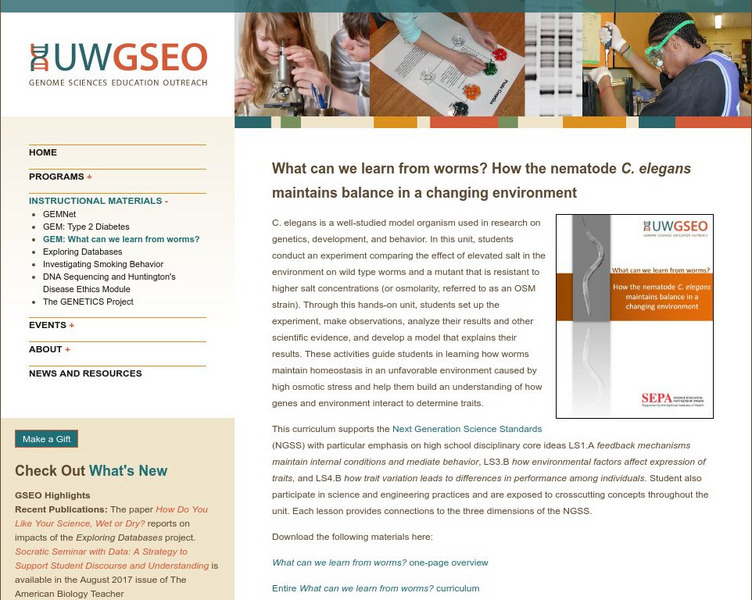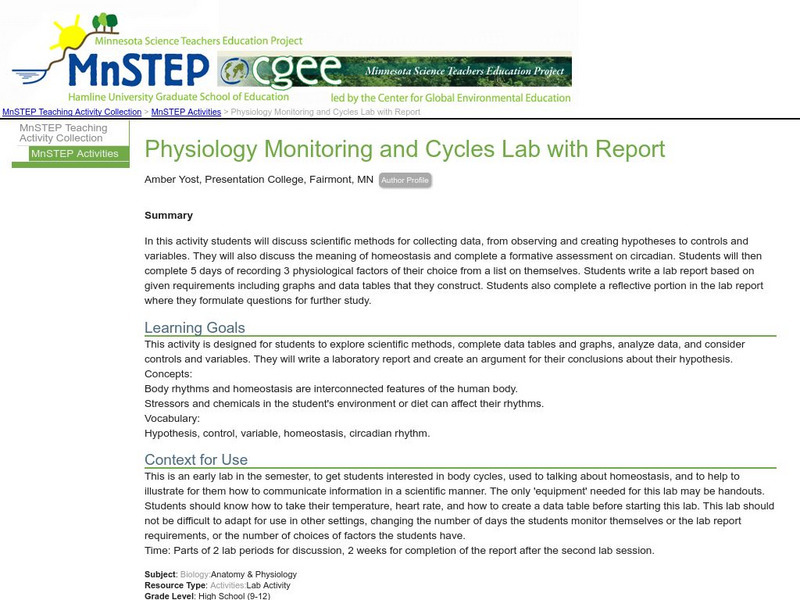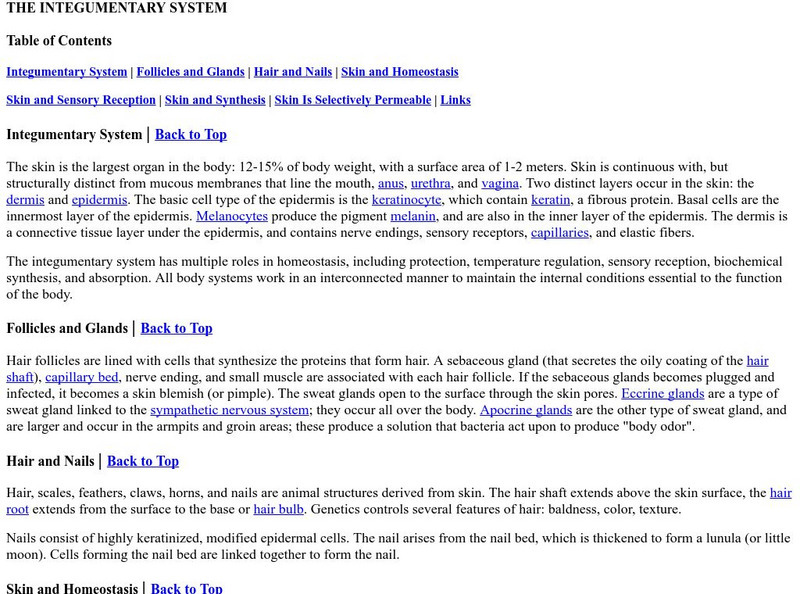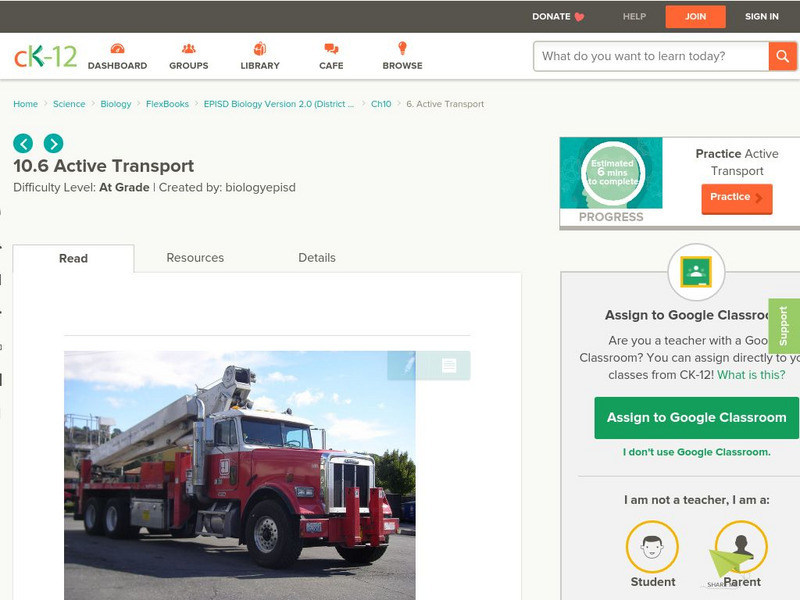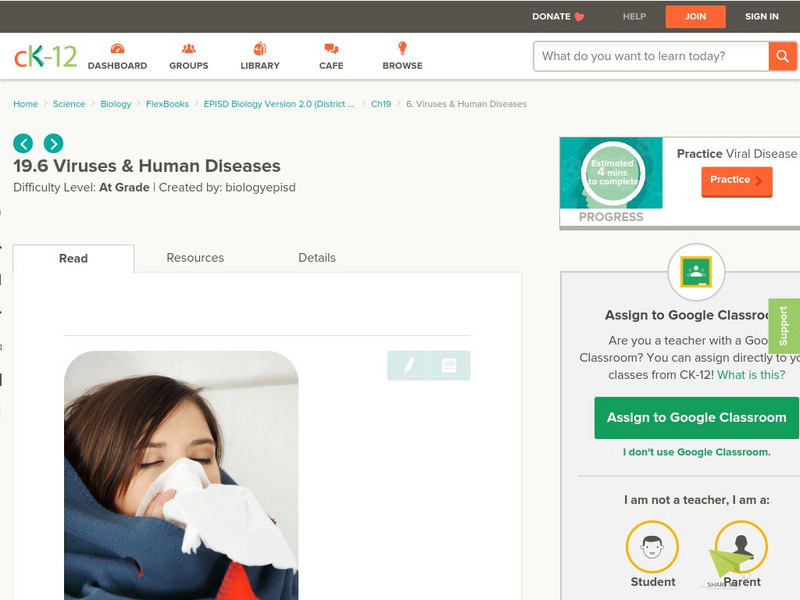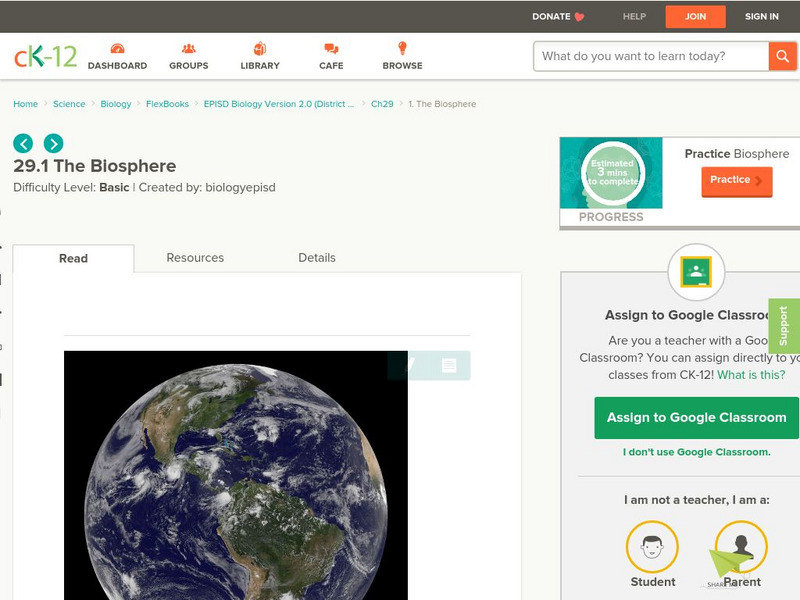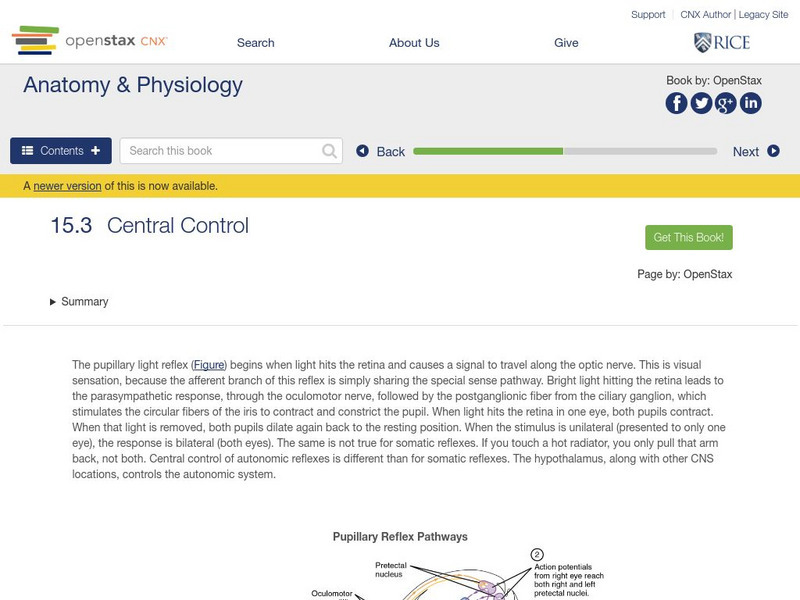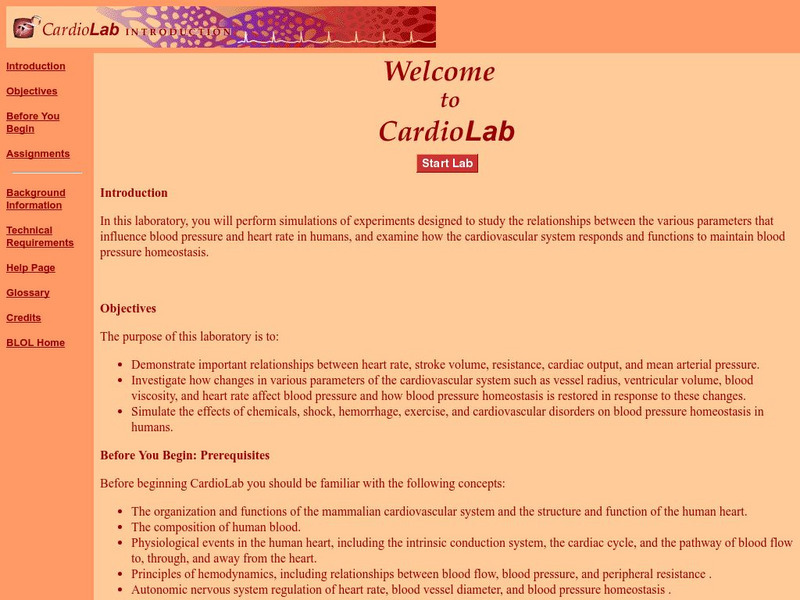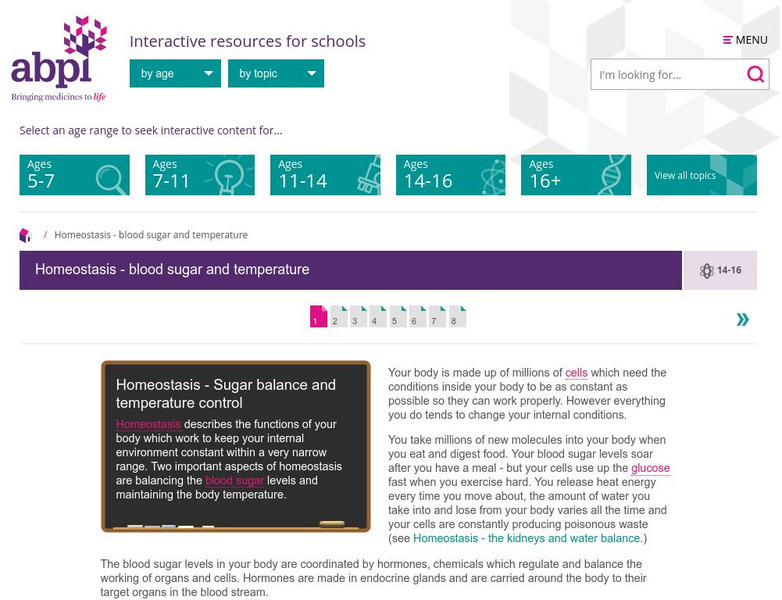University of California
Ucmp: Hot Blooded or Cold Blooded?
An easy-to-understand explanation of what it means to either hot- or cold-blooded.
University of Washington
Genome Sciences Education Outreach: What Can We Learn From Worms?
Multi-lesson unit in which students conduct an experiment comparing the effect of elevated salt in the environment on wild type worms and a mutant that is resistant to higher salt concentrations. Lessons enhance learning how worms...
Science Education Resource Center at Carleton College
Serc: Physiology Monitoring and Cycles Lab With Report
Using physiology monitoring, students will understand how to collect data using scientific methods in this activity. Students will also learn how to communicate the finding in a lab report. Physiology monitoring will include measuring...
Open Curriculum
Open Curriculum: Muscular System
In this resource, students learn the major role of the muscular system, about muscle fibers, the role of ATP and calcium in muscle contraction, how muscles move bones, and how muscles respond to aerobic and anaerobic exercise.
Estrella Mountain Community College
The Integumentary System
The parts of the integumentary system are described along with their functions.
National Cancer Institute at the National Institutes of Health
Seer Training Modules: Introduction to the Human Body
Self-guided learning activity where students learn about the functions, processes, and anatomy of the human body. There is a short quiz at the end of the lesson to check for understanding.
CK-12 Foundation
Ck 12: Active Transport
[Free Registration/Login may be required to access all resource tools.] This tutorial serves as an introduction to active transport and explains how to distinguish active transport from facilitated diffusion.
CK-12 Foundation
Ck 12: Viruses & Human Diseases
[Free Registration/Login may be required to access all resource tools.] Viruses cause many human diseases. They can range from mild to fatal. This activity explains how viruses cause human disease.
CK-12 Foundation
Ck 12: Episd: The Biosphere
[Free Registration/Login may be required to access all resource tools.] Earth's biosphere is introduced to demonstrate what the Gaia Theory does for the environment. Students will also understand what homeostasis is.
CK-12 Foundation
Ck 12: Episd: Homeostatis
[Free Registration/Login may be required to access all resource tools.] Understand what homeostasis and why it is important to maintain.
CK-12 Foundation
Ck 12: Kidneys
[Free Registration/Login may be required to access all resource tools.] Why are your kidneys so important? Find out in this online tutorial. You will learn to describe the roles of the kidneys in homeostasis.
CK-12 Foundation
Ck 12: Characteristics of Life
[Free Registration/Login may be required to access all resource tools.] Videos, texts, activities, and assessments about the factors that characterize living things.
Georgia Department of Education
Ga Virtual Learning: Anatomy and Physiology: Cells
In this module, students discover how each cell is organized to complete the function of producing and transporting proteins, and how cells relate to homeostasis of the body.
Georgia Department of Education
Ga Virtual Learning: Anatomy & Physiology: Digestion Sys Absorption, Elimination
Through informational text with printable notes, interactive assignments, and video clips, students discover the structure and function of the human digestive system.
Georgia Department of Education
Ga Virtual Learning: Ap Biology: Nature of Science
In this online course, students look at the big ideas and themes of biology and review how these ideas are used to develop scientific inquiry and research.
OpenStax
Open Stax: Homeostasis
This section of a textbook provides information regarding human homeostasis, a process that has the body continuously monitor its internal conditions. Includes a linked video.
OpenStax
Open Stax: Anatomy & Physiology: Central Control
Students investigate the role of higher centers of the brain in autonomic regulation.
OpenStax
Open Stax: Anatomy & Physiology: An Overview of Blood
Find out about the characteristics and components of blood with informational text, diagrams, examples, and review questuons.
Texas Education Agency
Texas Gateway: Internal Feedback Mechanisms
A learning module that explores how our body has internal feedback mechanisms to maintain homeostasis.
Curated OER
Kids Health: About Kids Health
This page for the huge KidsHealth site gives you a jumping-off point and an overview of the site's content, purpose, and usage. With sections for parents, kids, and teens, KidsHealth has been online since 1995 and today it is accessed...
Texas Education Agency
Texas Gateway: Homeostasis Succession
Given scenarios, illustrations, or descriptions, the student will identify the process of ecological succession and the impact that succession has on populations and species diversity.
Other
California State University: Biology Labs Online: Cardio Lab
A comprehensive set of virtual experiment assignments where students explore the roles of blood pressure and heart rate in maintaining a balanced cardiovascular system. Includes background information, glossary, online notebook, and...
The Association of the British Pharmaceutical Industry
Abpi: Homeostasis: Blood Sugar and Temperature
A complete, student-paced lesson on homeostasis in the human body, focusing on blood sugar and core temperature. Students work their way through illustrated and animated tutorials, and answer review questions along the way. There is a...
PBS
Pbs Learning Media: Body Control Center
Throughout the day, your nervous system monitors and makes endless adjustments to your body's basic systems--all to keep you alive. This interactive feature illustrates the complexity of such a task.


